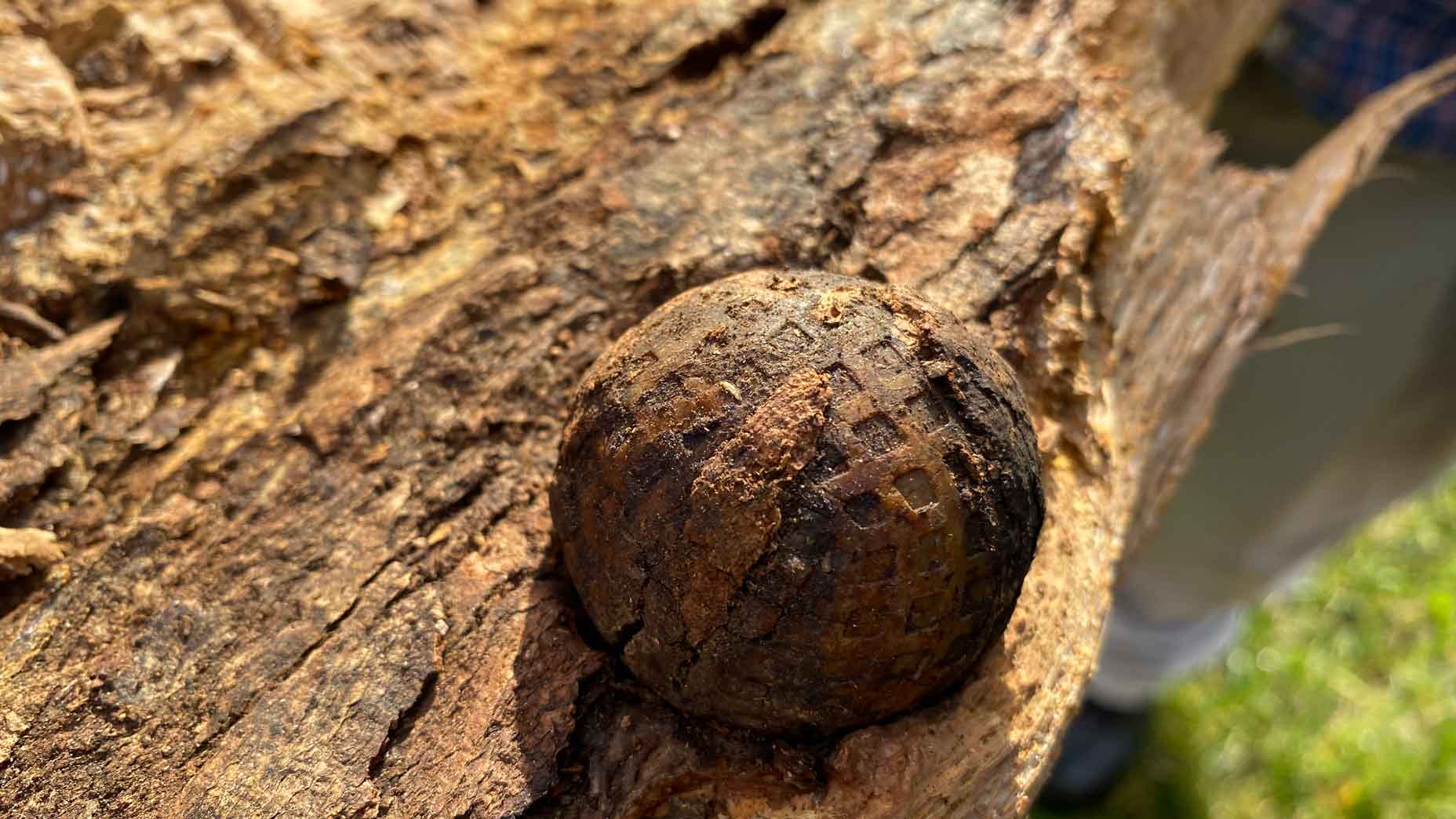Earlier this week, a lost golf ball was recovered at a venerable Virginia course, but not within a legal timeframe. The rules of the game allow a three-minute search. This ball had been missing for about 100 years.
That, anyway, is what the evidence suggests to Mark Fry, director of golf at the Omni Homestead Resort, the historic retreat in the Allegheny Mountains where the discovery was made.
The property is home to a pair of classic courses, one of which is aptly called the Old Course. Built in 1892, it is lined with mature oaks and maples that workers clear throughout the year, hauling away dead and fallen trees, which they chop into firewood for the resort. Ordinarily, this work happens without incident. This past Monday, though, after splitting open a thick piece of oak, a crew member noticed two golf balls embedded in the wood. Both were caked in dirt and sap. And while neither looked especially new, one, in particular, looked very old. Though no markings or lettering were visible on it, its throwback traits were plain to see, including an outmoded cover with a square dimple pattern of the kind popular around a century ago.
“It was pretty clear it had been in that tree for a good long time,” Fry says.
How it got there is another matter.
Among other things, the Old Course is known for having the longest-continuously operating first tee in the United States. The course has seen a lot of golf from a lot of famous resort guests. Numerous U.S. presidents have played it. Sam Snead made the property his home away from home.
Somewhere along the line, somewhere on the Old Course, the square-dimple patterned ball got lodged in an oak, possibly wedged in a fork of the tree.
“Maybe someone hit it there, or maybe someone placed it there,” Fry says. “Whatever happened, the ball stayed up there and the tree grew around it.”
Pinpointing the ball’s provenance — who played it, when and where — is probably impossible, but Fry and his colleagues at the Omni Homestead would like to at least know what kind of ball it is. Could it be, for instance, a Haskell ball, a rubber-core wound ball more commonly known as a gutta percha? They haven’t had the chance to investigate yet. For the past few days, the thick segment of oak, with the ball stuck in it like a plugged drive in fairway, has been in Fry’s office, a lively source of conversation for Fry and his team.
Learning more about it will require a close look from an expert. In the meantime, studying a photo from afar, Victoria Nenno, senior historian at the USGA Golf Museum and Library, offered this assessment in an email to GOLF.com: “the diamond or mesh (square) pattern most likely dates between 1910 and 1930.” In all likelihood, she added, it’s a rubber-core ball. “But without further tests we would be unable to assess if it is a solid (single material, made in a mold) gutta percha ball.”
It is not uncommon, of course, for contemporary golfers to play throwback equipment. Could the ball have belonged to a modern-day hickory sticker? From where Fry sits, the thickness of the oak — roughly 15 inches in diameter — and the fact that the ball was buried inside it, means there’s no chance the ball was mislaid recently.
“Obviously that ball was in there for decades to be completely captured by the tree,” he says.
What the resort does next with its find will depend in part on what they learn about it.
“We’ll definitely archive it in some way,” Fry says. “But it would be awesome if we could identify any additional history around it to make sure that it is displayed appropriately.”
For now, he’s having fun just thinking about it.
“You can kind of let your imagination go towards all kinds of possibilities,” he says. “Maybe this ball was hit by President Taft.”
